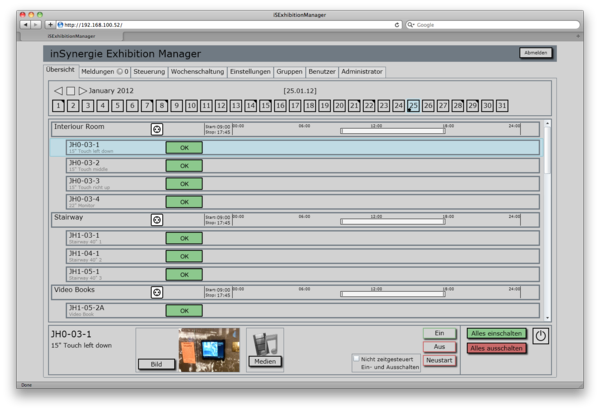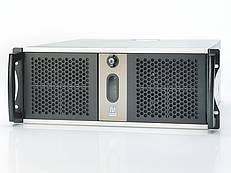You are here: Home
inSynergie Exhibition Manager (iSEM)
Network-based system for the operation of exhibitions
Short description (Feature-List)
- System for monitoring an arbitrary number of stations in the network
- Time-controlled or manual switching on/off of the whole system or single stations
- Switching operation according to default times, weekdays or dates
- Start of summer and winter season can be set individually
- Web frontend for complete monitoring and administration (PC/MAC)
- Includes watch-dog functions for processes on client stations
- Reboot and/or e-mail notification when client errors appear
- Different user levels for restricted access rights
- Automatic including of client stations – auto connect
- Formation of groups – stations can be subsumed in groups
- Power-control – all kind of actors can be integrated (EIB/KNX, IP plug sockets, relays, etc.)
- Remote content management – copying of content from browser to client stations
- Remote creation of playlists on clients (for inSynergie playout systems)
- Projector monitoring (display of lamp hours, etc.)
- Connection to iSMaster media control allows any enhancements
Demand
Nowadays in exhibitions and museums electronical media content for knowledge transfer is essential, from simple video or audio players or computer based systems for complex video installations to interactive games respectively touch applications.
As the building management for light, heating and climate is nowadays taken for granted, there is also a demand in museums to centrally monitor and control single stations or to access the content of stations, as image, video or audio files. We use the term “station” as synonym for a simple exhibit with audio player as well as complex interactive media installations.
Power on and off of stations

Everybody is talking about sustainability. Therefore naturally all stations should be only switched on as long as they are needed. It should be possible that this happens automatically at certain times but also manually. The automatic operation has to be flexible so that on different days different times can be considered, to the point of dates that get priority (on the 24th of December everything stays switched off. At any rate it is very important to provide a two-level switching off, meaning that computers are shut down, projectors are switched off (and given time for cooling) and not till then the electricity is cut off.
Input and exchange of data

Not only at the beginning of operation customers wants to distribute audio, video and text files to the playout systems. Also during operation many exhibitions want to change content in a quick and easy way. Unfortunately the argument “The SD card only has to be inserted once.” is often not economic. In practice videos have to be revised a number of times, audio clips are re-edited and texts have to be corrected. Since content is often not finished till short before the opening and hardware is built into the exhibit out of visual reasons, an exchange at the device is often not as easy as one could think. Higher expenses for network devices are justified by the possibility to transfer content from a central administration point to the exhibits. Since computer systems, if used as playback stations, innately are network-compatible, they only have to be integrated into the network.
Description of each feature
Main window
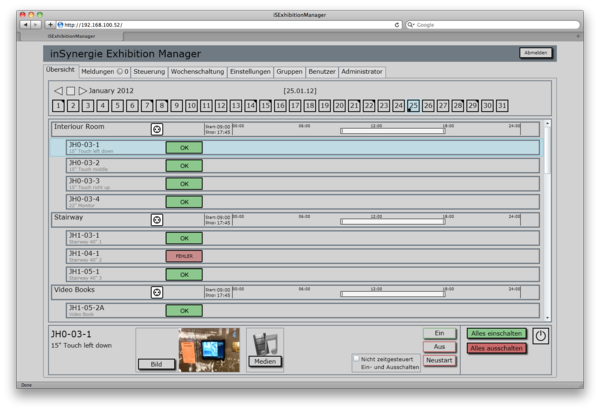
In the main window all stations are displayed with their status. Depending on operation rights this is the interface to edit the time control or to change content of the station.

Users
Of course, the access is secured. Very precise rights can be assigned to login accounts of staff members. That ranges from simple monitoring to full administration rights including creating new user accounts and assigning rights.

Power-on and -off
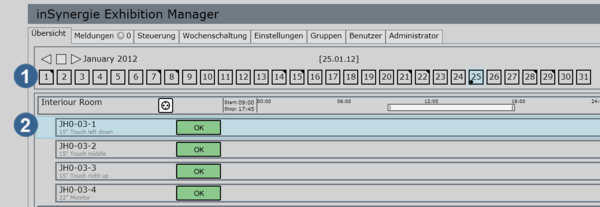
1) The times for power-on and power-off can be individually set for each date. Default times provide a basic frame and can be preset for week days and seasons (summer/winter time) individually in the respective menu.
2) Exhibits can be united to groups, which is reasonable e.g. when multiple exhibits are connected to the same power supply.
Finding exhibits
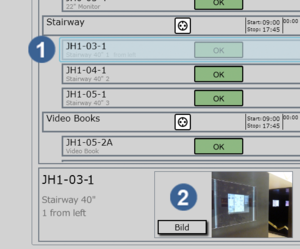
1) Exhibits are known under different names for each subsection contractor. Architects, electricians and carpenters tend to use different naming than the museum team or the software developers. Thus, an optional description can be added to the “standard” names (e.g. the names from the building plan).
2) To assure that all parties are talking about the same exhibit, a picture can be added to each station.
Operational disorders
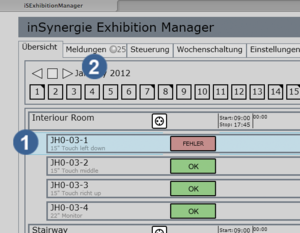
1) Current errors during operation are displayed in an exposed way. A reaction within the time X can be forced. If no reaction takes place, an e-Mail can be send or other measures can be taken. A reaction can be a simple registering of the incident or a reboot of the system.
2) To support the analysis of the service technician all error reports are saved in a chronological list.
Light on
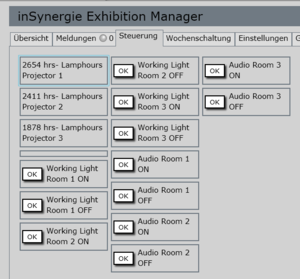

Via the seamless integrated media control it is very simple to integrate displays and switching tasks that are individually connected to an installation into the user interface. This allows to monitor e.g. lamp hours of projectors, to switch light sources or to call volume setups in the user interface.
CMS (Content Management System)
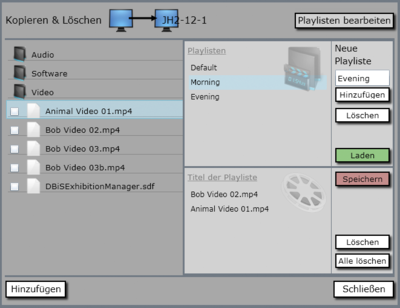

Computer-based exhibits with Windows operating system can be directly accessed from the browser interface and content can be copied or deleted. This means that all participants can exchange audio and video files on the terminal device during the process of content creation. Thus, costly deliveries and arrangements can be omitted and the source of errors at updating is minimized. For inSynergie playback systems, e.g. iSMovieManager playlists can be directly created.
Example of system structure
The inSynergie Exhibition Manager system consists of four components:
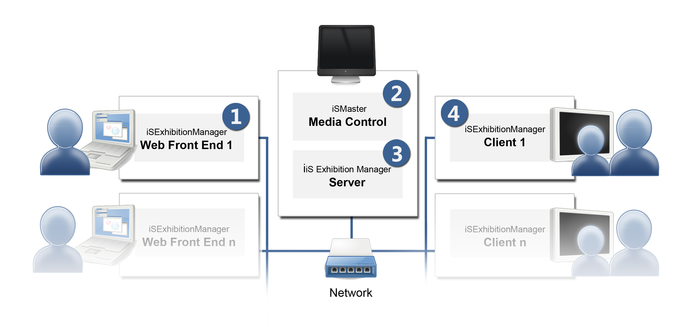
1. Web Front-End:
Via a browser the complete system can be administered, operated and monitored. An intuitive operation with drag and drop, time lists that can be changed via mouse, etc. assure that the usability is very easy. Due to the browser frontend, the operation or monitoring can be done without software installation from any location in the building, even from several locations at the same time.
2. Media Control iSMaster:
Realization of server commands and database queries. Since a full integrated media control takes charge of the communication to other bus systems, it is possible to integrate terminal devices in a very flexible way. Whether “Switch on Exhibit” means switching a KNX or IP plug socket and/or the starting of a client via WOL is decided here. Thus, the system is very easily and individually customizable. The iSEM Server and the iSMaster can run together or one system or on separate hardware.
3. The iSEM Server:
Contains the database for stations, playlists, time control, users, settings, etc. and triggers the time-control events. The server communicates with the three other components.
4. The iSEM Client:
Is installed on each system (exhibit) that is to be monitored and operated. Includes a process watch-dog and serves as server for the content management feature.
To the product page:
The iSExhibition manager being a system for runtime-control and content-distribution to media stations fulfills all tasks that incur at the administration of exhibitions with electronical media. One of its main features is naturally the time-based or manual switching on/off of the whole system or single stations. The iSExhibitionManager is optionally expandable with a connection to the iSMaster media control.


